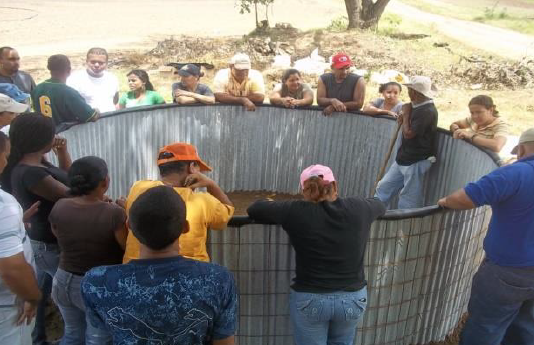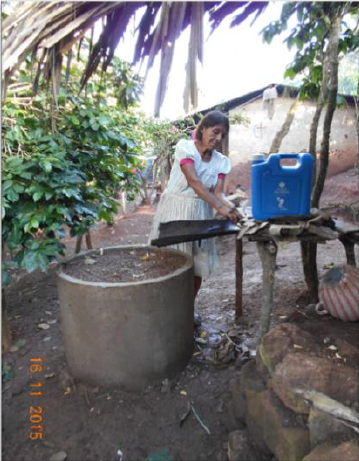
RAINWATER HARVESTING FOR GUATEMALA

This is big, particularly with changing weather conditions which include increasingly long drought conditions. Catching the rain that does fall and storing it for when most needed, is a game changer. These new above-ground tanks can hold approximately 1,850 gallons of water.
Left: Artisinal tank, easy to build and affordable
The water and sanitation access in Guatemala for 2015 was quite similar to that reported in the 2002 census. Whereas, in urban areas, 75% of people have water and sanitation systems, the percentage drops to 20% in rural areas (UNICEF, 2015). Among other shortcomings, rural areas more vulnerable to extended dry seasons. Particularly affected are those who rely on agriculture for the food security of their families.
Together, we can reduce huge health and food risks of scarce water for family farms in rural Guatemala. Our project will strengthen the capacities of families to build rainwater harvesting and storage systems to secure a source of water for smart agricultural irrigation, poultry-raising as well as household needs. Rain will be captured from rooftops and channeled to storage tanks.
Community participation will be key to achieve long-term sustainability; especially where there is little availability from springs, brooks, lakes and rivers. Additionally, water from washing will be sufficiently filtered to make that water reusable for irrigation through the installation of bio-sand water filters. Training and technical assistance will be provided to community volunteers to secure sustainable irrigation practices and a proper management of water sources.
Each combined water harvesting system and bio-wastewater filter along with training will cost US$133 per family. The reach is intended to benefit 400 families. At an average of 6 people per family, about 2,400 people will experience direct results with major food, health and livelihood benefits.

can be used to irrigate family farm